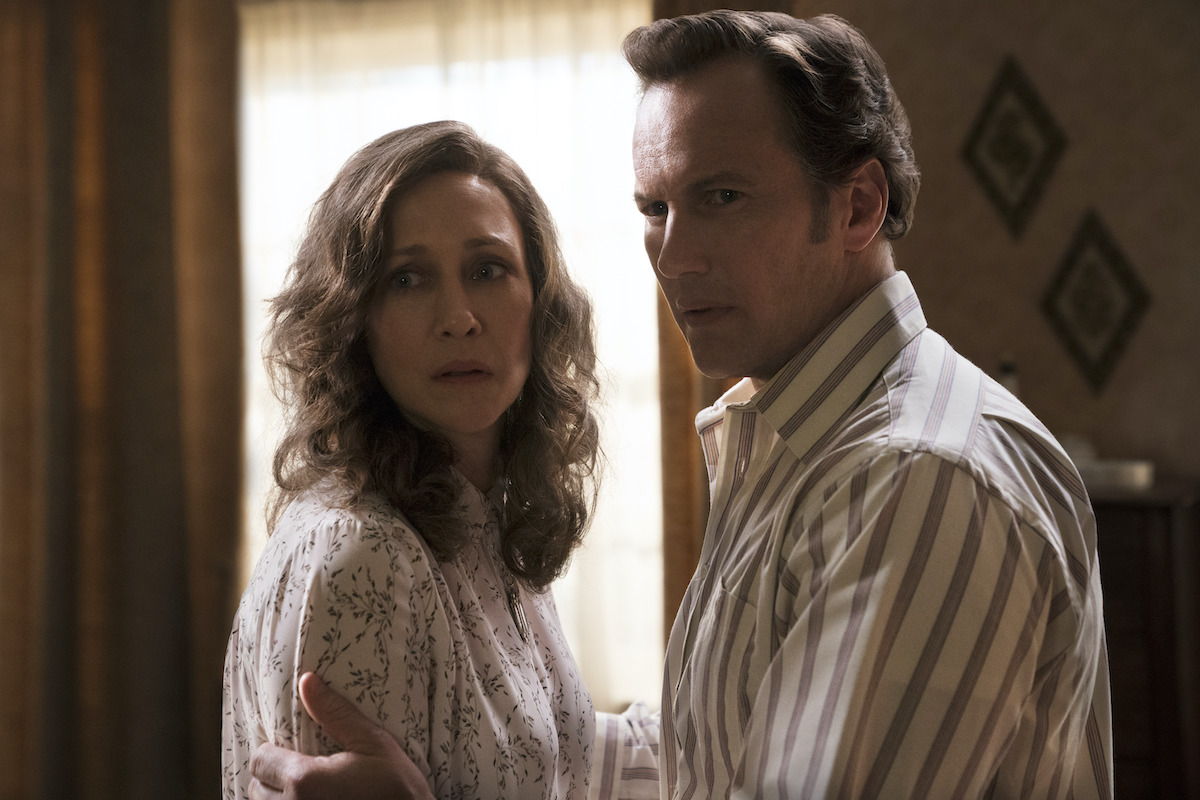Books
‘The Devil in Connecticut’: 1983 Book Based On the Real ‘Conjuring: Devil Made Me Do It’ Case Returns to Print

For the first time in over 10 years, author Gerald Brittle‘s book The Devil in Connecticut is now back in print, telling the true story behind The Conjuring: The Devil Made Me Do It.
“This is the original 1983 book which first detailed the horrors first-hand, published with the direct involvement of Ed & Lorraine Warren, the Glatzel family, as well as Arne Cheyenne Johnson—who was the first person in the US to use in a murder defense that ’the Devil made him do it’,” Graymalkin Media, LLC explains in an email to Bloody Disgusting today.
The company continues, “It has been out of print for over 10 years and is now available again to terrify readers in ebook, audio, and print. It’s the only book that exclusively deals with the true case file that is the inspiration for the film.” Here’s the full rundown…
“It was one of the most sensational murder trials of the 1980s. When Arne Cheyenne Johnson stabbed an acquaintance to death with a five-inch folding knife, Johnson presented one of the most shocking legal defenses in history: not guilty by virtue of demonic possession. As the press put it, “the Devil made me do it.”
Johnson’s shocking story began months earlier, when his girlfriend’s eleven-year-old brother, David, encountered a spectral figure looming at the foot of the bed and then started showing telltale signs of demonic possession. David suddenly spoke in Latin, levitated, and suffered beatings at the hands of an invisible demon. After a team of Catholic priests failed to drive the demon out, the case was taken up by Ed and Lorraine Warren. The Warrens had fought demons across the globe, but the Connecticut Devil would be one of their greatest challenges, and perhaps their most deadly.
Now includes an 8-page photo insert documenting the possession featuring images from the Glatzel family and the Ed and Lorraine Warren collection.”
The paperback version will release on June 22. Pre-order your copy today.

Books
‘Halloween: Illustrated’ Review: Original Novelization of John Carpenter’s Classic Gets an Upgrade

Film novelizations have existed for over 100 years, dating back to the silent era, but they peaked in popularity in the ’70s and ’80s, following the advent of the modern blockbuster but prior to the rise of home video. Despite many beloved properties receiving novelizations upon release, a perceived lack of interest have left a majority of them out of print for decades, with desirable titles attracting three figures on the secondary market.
Once such highly sought-after novelization is that of Halloween by Richard Curtis (under the pen name Curtis Richards), based on the screenplay by John Carpenter and Debra Hill. Originally published in 1979 by Bantam Books, the mass market paperback was reissued in the early ’80s but has been out of print for over 40 years.
But even in book form, you can’t kill the boogeyman. While a simple reprint would have satisfied the fanbase, boutique publisher Printed in Blood has gone above and beyond by turning the Halloween novelization into a coffee table book. Curtis’ unabridged original text is accompanied by nearly 100 new pieces of artwork by Orlando Arocena to create Halloween: Illustrated.
One of the reasons that The Shape is so scary is because he is, as Dr. Loomis eloquently puts it, “purely and simply evil.” Like the film sequels that would follow, the novelization attempts to give reason to the malevolence. More ambiguous than his sister or a cult, Curtis’ prologue ties Michael’s preternatural abilities to an ancient Celtic curse.

Jumping to 1963, the first few chapters delve into Michael’s childhood. Curtis hints at a familial history of evil by introducing a dogmatic grandmother, a concerned mother, and a 6-year-old boy plagued by violent nightmares and voices. The author also provides glimpses at Michael’s trial and his time at Smith’s Grove Sanitarium, which not only strengthens Loomis’ motivation for keeping him institutionalized but also provides a more concrete theory on how Michael learned to drive.
Aside from a handful of minor discrepancies, including Laurie stabbing Michael in his manhood, the rest of the book essentially follows the film’s depiction of that fateful Halloween night in 1978 beat for beat. Some of the writing is dated — like a smutty fixation on every female character’s breasts and a casual use of the R-word — but it otherwise possesses a timelessness similar to its film counterpart. The written version benefits from expanded detail and enriched characters.
The addition of Arocena’s stunning illustrations, some of which are integrated into the text, creates a unique reading experience. The artwork has a painterly quality to it but is made digitally using vectors. He faithfully reproduces many of Halloween‘s most memorable moments, down to actor likeness, but his more expressionistic pieces are particularly striking.
The 224-page hardcover tome also includes an introduction by Curtis — who details the challenges of translating a script into a novel and explains the reasoning behind his decisions to occasionally subvert the source material — and a brief afterword from Arocena.
Novelizations allow readers to revisit worlds they love from a different perspective. It’s impossible to divorce Halloween from the film’s iconography — Carpenter’s atmospheric direction and score, Dean Cundey’s anamorphic cinematography, Michael’s expressionless mask, Jamie Lee Curtis’ star-making performance — but Halloween: Illustrated paints a vivid picture in the mind’s eye through Curtis’ writing and Arocena’s artwork.
Halloween: Illustrated is available now.















You must be logged in to post a comment.